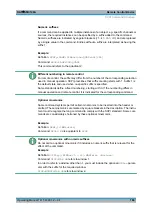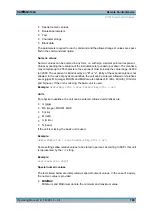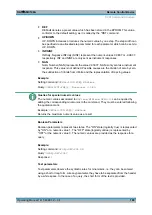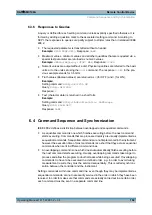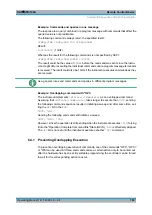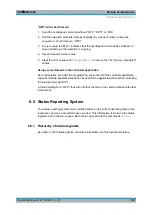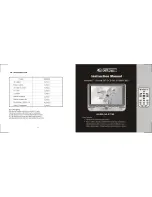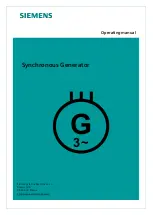
Remote Control Basics
R&S
®
SMC100A
197
Operating Manual 1411.4060.32 ─ 04
All status registers have the same internal structure.
SRE, ESE
The service request enable register
SRE
can be used as
ENABle
part of the
STB
if the
STB
is structured according to SCPI. By analogy, the
ESE
can be used as the
ENABle
part of the
ESR.
6.5.2 Structure of a SCPI Status Register
Each standard SCPI register consists of 5 parts. Each part has a width of 16 bits and has
different functions. The individual bits are independent of each other, i.e. each hardware
status is assigned a bit number which is valid for all five parts. Bit 15 (the most significant
bit) is set to zero for all parts. Thus the contents of the register parts can be processed
by the controller as positive integers.
Fig. 6-2: The status-register model
Description of the five status register parts
The five parts of a SCPI register have different properties and functions:
●
CONDition
The
CONDition
part is written into directly by the hardware or the sum bit of the next
lower register. Its contents reflect the current instrument status. This register part can
only be read, but not written into or cleared. Its contents are not affected by reading.
●
PTRansition
The two transition register parts define which state transition of the
CONDition
part
(none, 0 to 1, 1 to 0 or both) is stored in the
EVENt
part.
The
Positive-TRansition
part acts as a transition filter. When a bit of the
CONDition
part is changed from 0 to 1, the associated
PTR
bit decides whether the
EVENt
bit is set to 1.
–
PTR bit =1: the
EVENt
bit is set.
–
PTR bit =0: the
EVENt
bit is not set.
Status Reporting System




